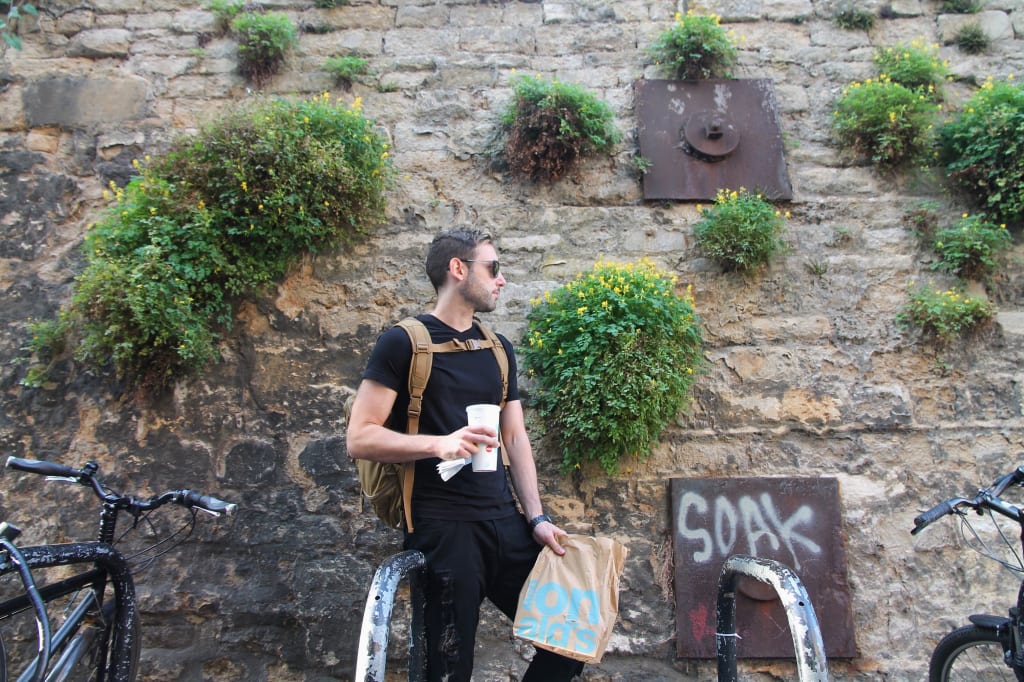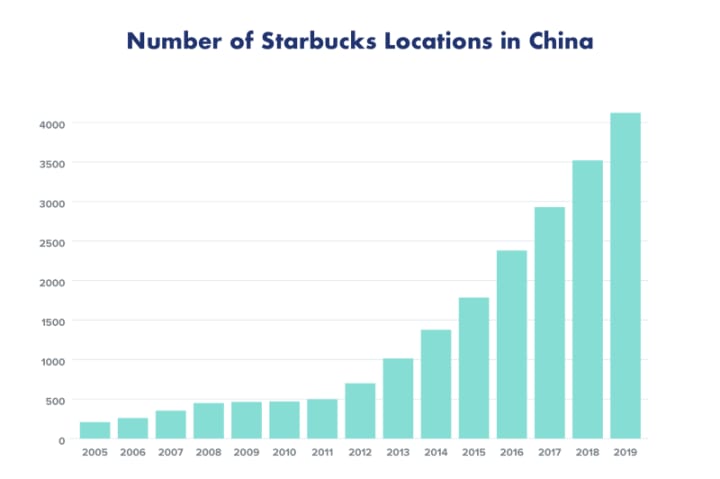How Starbucks Almost Went Bankrupt In Australia
Pumpkin spice latte is an insult to Australians.

Starbucks had to close most of its shops to avoid total bankruptcy in Australia.
It's 2019 and a group of international tourists walk inside a Starbucks in Sydney. Every nationality is grabbing their favorite latte inside, except one - Australians. Sydney is a decently big city, with more than five million inhabitants. And Australia is crazy about coffee. Then, where are all these Sydneysiders hiding?
The opening lines point to everything wrong and right with Starbucks in Australia. The Land Down Under is rich and loves coffee. Australians drink almost four pounds of coffee per capita, totaling almost $5.5 billion - which is roughly 8% of the global market.
But larger-than-life coffee chains can't seem to find their place in the booming Australian market. Starbucks is the biggest coffee brand in the history of the roasted bean.
Everything that makes Starbucks grow rapidly around the world is exactly the problem in Australia.
But tourism offered a beacon of hope for the international brand.

Howard Schultz took the company from a retail shop in Seattle to the biggest coffee brand in the world.
Italian culture, great working conditions, and personal dedication make Starbucks the most recognizable name in the industry.
The company expanded to more than 30 000 locations in 70 countries. Starbucks nets $20 billion each year from selling Italian espresso with an American twist.
The company expanded to China in 1999, by opening the first coffee shop in Beijing. China is not a coffee-drinking country, and the market is extremely hostile. But fast expansion, exclusivity, and big brand status created a cultural phenomenon in China.
"China traditionally has been a tea-drinking country but we turned them into coffee drinkers." - Howard Schultz
Coffee was more expensive than in the U.S., and new stores opened up twice a day. You can see Starbucks next to a Starbucks in China, working in full capacity. More than 4,300 stores employ 58,000 partners in China. Shanghai has the Starbucks museum which is great fun for any coffee-loving tourist visiting the city.
Starbucks offers great employment conditions for global baristas. For the first time in history, coffee makers can own a valuable share in the company through the Bean Stock program.
Howard Schultz was motivated by his complicated past. He decided to build a financial safety net for his employees so that they could escape the fate of his father. Fortune magazine places Starbucks among the top five world's most admired companies.
But Starbucks failed on its face trying to replicate the same success in Australia. The company racked up more than $100 million in losses during the first years.

The same strategy that won China is an Achilles Heel in Australia.
The great weakness - in spite of overall strength - led to an almost fatal downfall.
Starbucks expanded rapidly after the initial opening in Sydney. In just six years, the company opened almost 90 locations. The quick expanse did not give the Australian consumer any time to test the new coffee on the block.
Unlike China, Australia already has a coffee culture, brought by European immigrants. Australian coffee lovers are more similar to Italians than Americans or the British drinkers.
Australians love to sit down and chat with their baristas. The coffee is more than a wake-up drink; it's a moment of unity with your friends and family. You're not paying high margins for a brand coffee, because you're not there just for the drink.
The fast expansion intimidated Australians, and they decided to stick with their old ways. Starbucks seemed too American and imposing. Suddenly, you can find the Green Siren logo on every corner. And Australians felt like their coffee culture was under American occupation.
Starbucks failed to adjust the menu for the Australian market. The offer is full of sugary drinks and strange flavors that are unheard of in Italian and Australian culture. The Pumpkin Spice Latte is an insult for the original espresso lovers.
Australians love their flat white, which is a stronger latte. Steamed frothy milk over a double shot of espresso makes for a latte. Flat white is similar to a latte but it has less frothed milk. Starbucks failed to recognize the importance of such a product, offering none on the original menu.
Starbucks picked the wrong locations too. Gloria Jean's is an American brand that makes it in Australia by offering coffee in shopping malls. Starbucks is set up on stand-alone shops with street frontage, similar to the American stores. And Australians were not having any of it.

Tourism is the only thing keeping Starbucks alive in the Land down under.
Australian coffee lovers turned against Starbucks. The year is 2008, and Starbucks is closing 61 out of 87 original stores. Starbucks declared massive losses. International tourists are the only people drinking coffee in Australian Starbucks.
Australia's buzzing tourism kept Starbucks alive. The industry was worth $60 billion in 2019 and employed more than 600 000 people. The brand's recognition helped the company expand to 39 stores in 2019.
Starbucks was in damage control with the local people in Australia. But the brand was still wildly popular around the world. The Starbucks name gave the brand another chance for Australia.
Sydneysiders are drinking coffee around the block from Starbucks, chatting to their local barista.
The guy behind the bar is interested in your new hairstyle, and who is getting married this week.
You can discuss the global health pandemic, and crack a joke or two. That barista is just like your lawyer, doctor, or a psychologist. They're part of the family. Coffee in Australia is also a part of the family.
Starbucks' rush to conquer the thriving Australian market has been a global disappointment and a disgrace for the largest Espresso brand. Everything that made Starbucks expand so rapidly in extremely unfavorable markets was exactly the problem in the land Down Under.
Coffee success is not a given in Australia, and the company can do much better if it adjusts to the local needs. Starbucks is opening new shops in the shopping malls as of 2019, and the company is changing the menu, hopefully learning from the costly mistakes.
Flat white coffee is now regularly on the menu.
About the Creator
Toni Koraza
Curious Fellow | Founder at madX Digital and 2 Minute Madness |






Comments
There are no comments for this story
Be the first to respond and start the conversation.